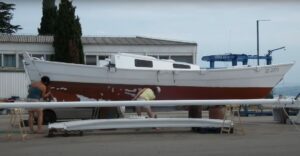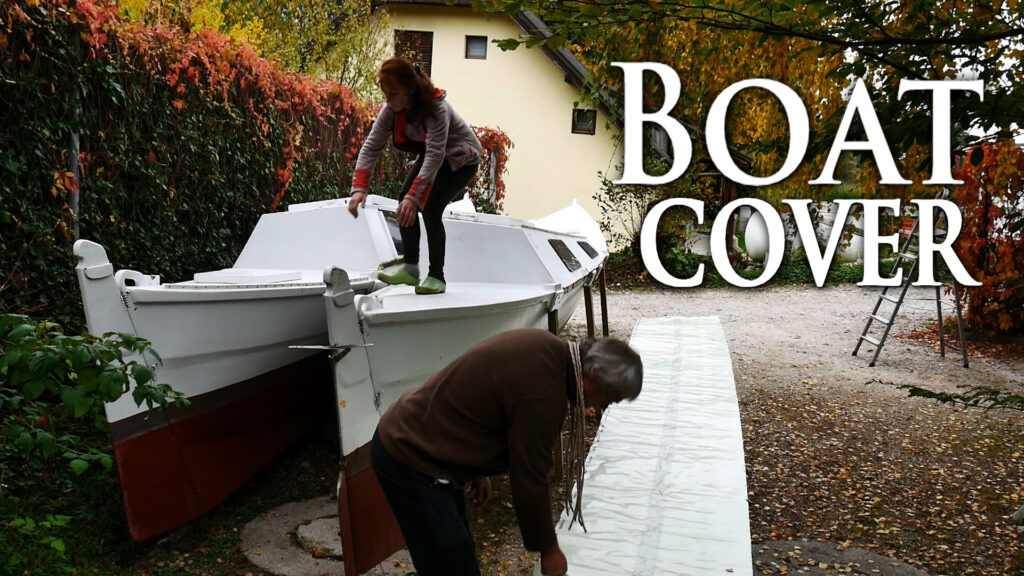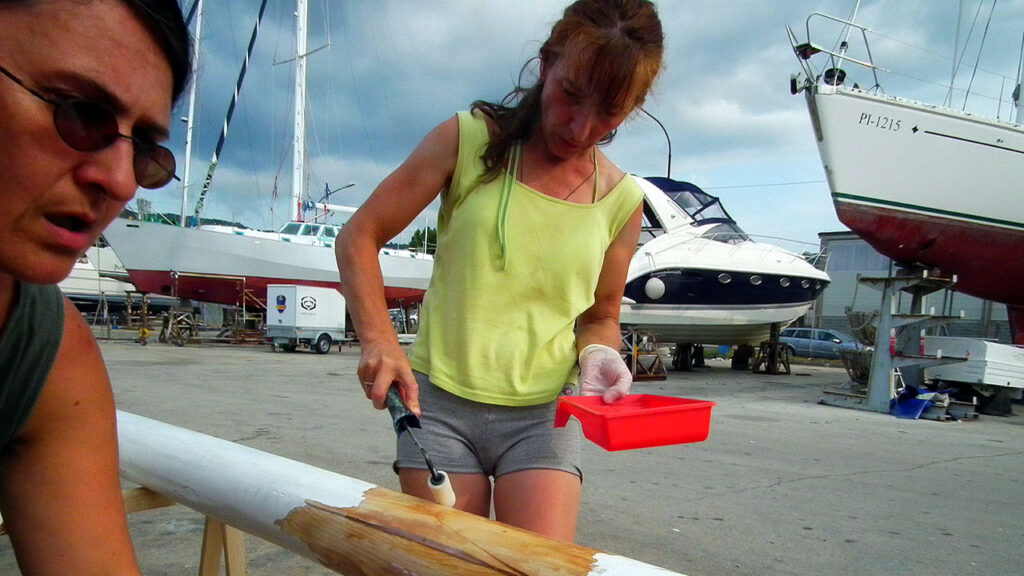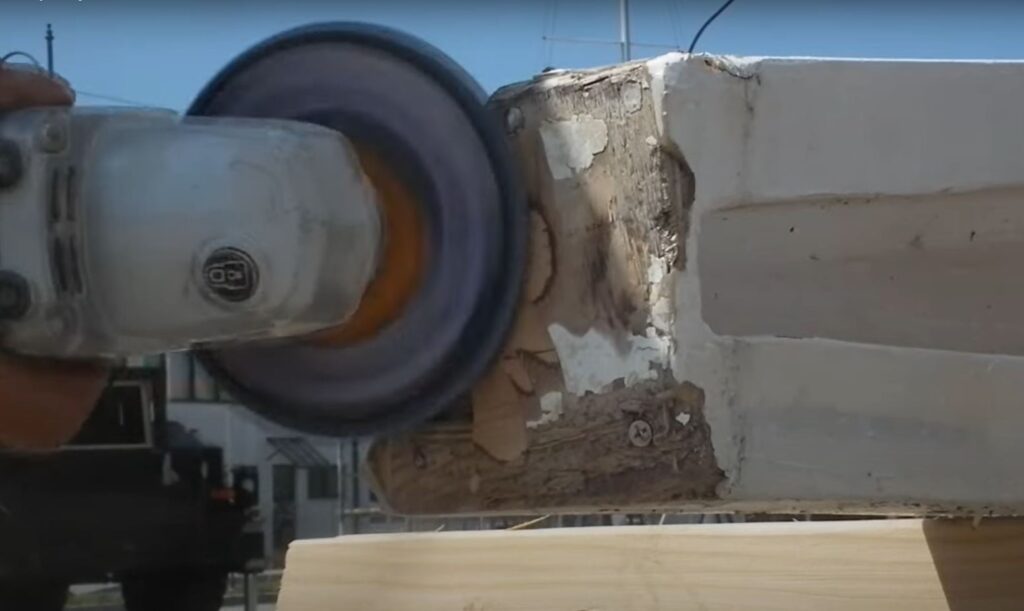Antifouling – Painting the underwater part of the hull with antifouling is a real nightmare for most boat owners. Those with thicker wallets order service technicians for this work, and the rest most do it with their own hands. How we do it on Ariki you can see in this video.
A series of six articles & videos
Why do we need antifouling
If the boat is in the water, the underwater part of the hull is overgrown with algae and marine organisms. Sludge and much more accumulate on it. If the hull is not protected with an antifouling coating, it grows very quickly. At sea even faster than in freshwater. We then say he got a beard. This can grow over half a meter in length during the winter. Such an overgrown boat can’t go anywhere anymore. Great power is needed to sail at minimum speed. It’s about like driving a car with the parking brake applied.
Therefore, the protection of the underwater part of boats with an antifouling coating is essential. Without it, only those boats can be lowered into the water for only a few hours and then lifted ashore again.
What are our experiences
Ariki is at sea all the time. We lift it ashore every other year for 7 or 8 days. Then we do an overhaul, which also includes painting the underwater part of the hulls with antifouling. The first year we launched the Ariki, we coated the underwater part of the hulls with the light blue synthetic antifouling recommended by the nautical store.
It was a very “contagious” color. If you were swimming around Ariki at the time, you were certainly painted light blue yourself. Sometimes on the arm, sometimes on the leg, often on the shoulder and less often on the back. Not many times everywhere. Whenever you came out of the water on board, there was always something blue about you.
But that was also all the benefit of the paint. That distant year of 2004, Ariki was in the water for only two months. During this time he sailed more than 1000 miles and came back quite well overgrown. That antifouling didn’t work on algae, nor on shellfish. These grew as if the hull was not protected at all.
A question
This is roughly how all the antifoulings available in stores work. They all offer protection for only a short time. Then the chin covers them. It doesn’t matter if they are hard or soft, smooth or even smoother, white, blue red or brown. All that is legally allowed is one big piece of shit for which, on top of everything, you throw away a bunch of money.
So we searched and asked further. We were most interested in what the big ships were painted on below. After all, those hundreds of meters of monsters don’t really rise from the water every year.
The Secret
The secret was revealed to us by Izola fishermen from the last two boats, which at that time still had a crew and a catch. Now Slovenia does not have a single fishing boat left. Foreign masters commanded, and our servants obeyed, and took the last two ships from the once numerous Izola fishing fleet to the scrap yard.
On large ships as well as on fishing boats, the underwater part is coated with a copper antifouling coating. Copper is the one that prevents plants and organisms from clinging to the surface of the hull.
Such a coating is prohibited in the European Union for small boats and legal for use on large ships. Another flood of idiocies of bureaucratic dictatorship.
The fact is, however, that such protected boats can be in the water even after many years without the need for antifouling to be renewed. Ariki’s record was 4 years, and the neighbor’s six-meter sailboat was still uncultivated after 5 years.
We asked the fishermen where to get such a paint? You see, they don’t sell that in stores.
And they laughed and laughed. It was so funny to them.
Oh yeah, now it’s also up to us where they have that paint. Where they build and service large ships. And Ariki is right there. In the middle of a shipyard on the asphalt where he spent the winter.
Since then, Ariki has had a copper coating on the underwater part. The current one is 4 years old and it’s time to rebuild it.
The procedure is as follows
The underwater part of the boat should be washed with a strong jet of water immediately after rising from the water.
When the surface dries, sand the entire surface with coarse sandpaper. Most people do this with an electric hand tool. With us, however, we figured out that it goes faster if a piece of coarse sandpaper for sanding wood no. 40, I wrap it around the board, hold it all in my hand and grind it by hand.
If damage occurs somewhere and it is necessary to grind deeper, then it is the turn of the angle grinder with the roughest lamellar plate that can be obtained.
This is followed by dusting the sanded surface and washing with running water and a sponge.
Followed by the same procedure as for the surface work. In those parts where the paint is sanded to the wood, it is the turn of two layers of epoxy, which are applied in a few hours with a paint roller or brush.
The next day, it’s time for a primer. Apply one coat on all damaged surfaces. As soon as the primer layer is completed, it can already be painted with antifouling. First the first layer and immediately after it the second.
Important details
The copper antifouling we use is very dense. It should be diluted before application for easier painting and better distribution on the surface. For this and also for washing the brushes and removing the paint by hand, we use nitro thinner.
The good side of almost all antifoulings is that you don’t have to wait for the paint to harden. The boat can go into the water immediately after painting. Experts here at the shipyard even say it’s best for antifouling to be as little exposed to the air as possible. So he has to get in the water right away!
Oh no, we can’t go in the water yet. There is still a lot to do, so we will be on land for another day or two.











